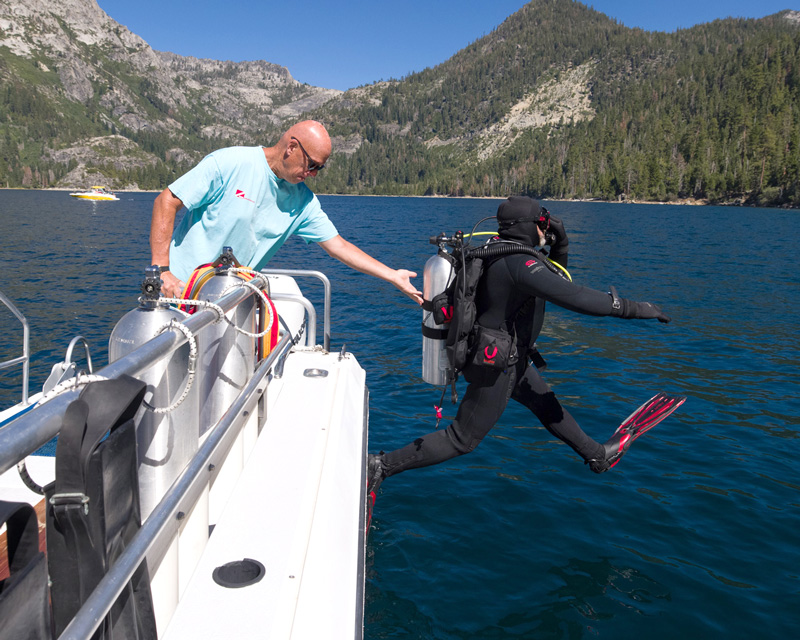The seasons are changing around the globe. In the northern hemisphere temperatures are getting cooler, the days are getting shorter, and the leaves are changing color and falling from the trees. In the southern hemisphere spring is beginning. Changes in seasons bring some of the best outdoor temperatures for comfortable exercise. Whether breaking out of a cold winter into the freshness of spring or escaping summer heat into the crispness of autumn, divers can enjoy an abundance of outdoor fitness and wellness activities.
Words & Photos by Gretchen M. Ashton, CFT, SFT, SFN, SSC, NBFE
In North America, walking, running, hiking, cycling, rowing and kayaking become particularly pleasant with slightly cooler temperatures. Divers can also stay active with lifestyle activities such as harvesting the garden and raking leaves. However, with fewer daylight hours, the new school year beginning, team sports schedules, and the holidays on the horizon, divers need to prioritize fall fitness. Especially if planning to escape to a tropical location mid-winter to go diving.

Staying active outside of diving helps you stay in shape for diving and improves your safety, enjoyment, and experience in the water
Make the most of daylight hours.
Fewer daylight hours at this time of year might involve a change in schedule. Us the daylight hours for exercising, outdoor chores and sustainable activities close to home. Outdoor exercise in park, or garden is a refreshing change from indoor workouts. Divers can combine short errands close to home with exercise by walking or riding a bike. Gardening ranges from large muscle activities such as lawn mowing and clearing tree branches, to vigorous activities like chopping and stacking wood, to small muscle activities such as weeding and harvesting vegetables. Depending on the activity, divers can burn an estimated 200 to 600 calories per hour during daylight hours.
Schedule exercise activities while the children are at school or practice.
Sometimes the only time to get in a good workout is during the few hours in the middle of the morning. Exercise immediately after getting the family on their way to work or school. Divers that walk their children to school can take the long way home and back to pick them up. Put the little ones in a stroller and just keep going. Other parents may be interested in joining the workout. Carpooling divers shuttling youth to sports or other lessons can use the wait time during practices to walk around the park where the ball field is located or perform calisthenics. Keep a small set of dumb bells or resistance bands in the trunk for 15-minute strength workouts when opportunities arise.
Exercise on the way home from work.
Divers often leave for work and come home in the dark. If this is the only option, exercising early in the morning before work is the best recommendation. This can be accomplished with a home gym or by joining a gym conveniently located between work and home. As another option, exercising on the way home from work can be a great way to avoid the traffic and release stress. Get outdoors as much as possible on days off work. Your body and mind will love the cross training.
Socialize outdoors on the weekends.
Getting together with family and friends for picnics, barbecues, camping, dive club and sports activities is a fun way to stay physically active. When not diving, plan hikes, join 5k runs, organize games and group activities like neighborhood bike rides. Flag football, beach volleyball and golf are just a few of the social ways to exercise outdoors.
A balanced fitness for diving program includes aerobic exercise, resistance training, good nutrition and stretching. Mix up the workout indoors or outdoors. Whatever the day of the week or time of day, divers need to exercise year-round. Changing seasons are opportunities to refresh a workout which helps keep the body stimulated, the mind engaged, and the diver fit for the next diving experience.
Words & Photos by Gretchen M. Ashton, CFT, SFT, SFN, SSC, NBFE
